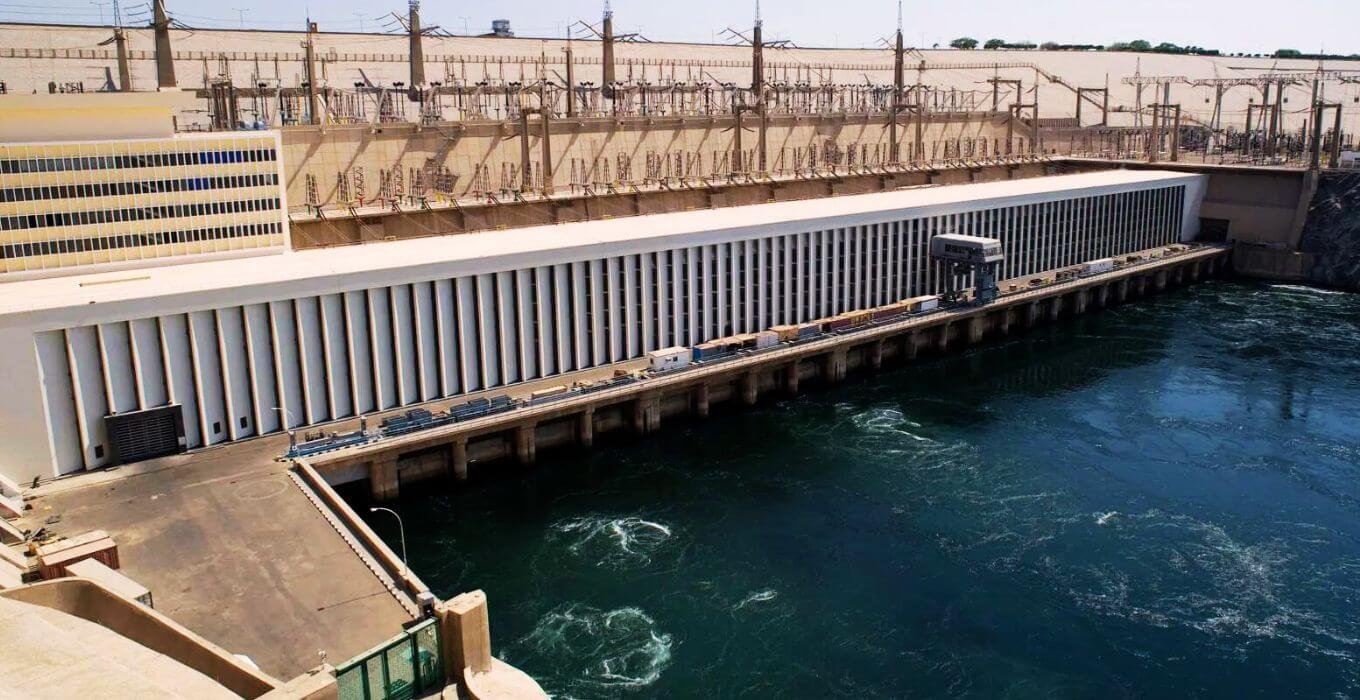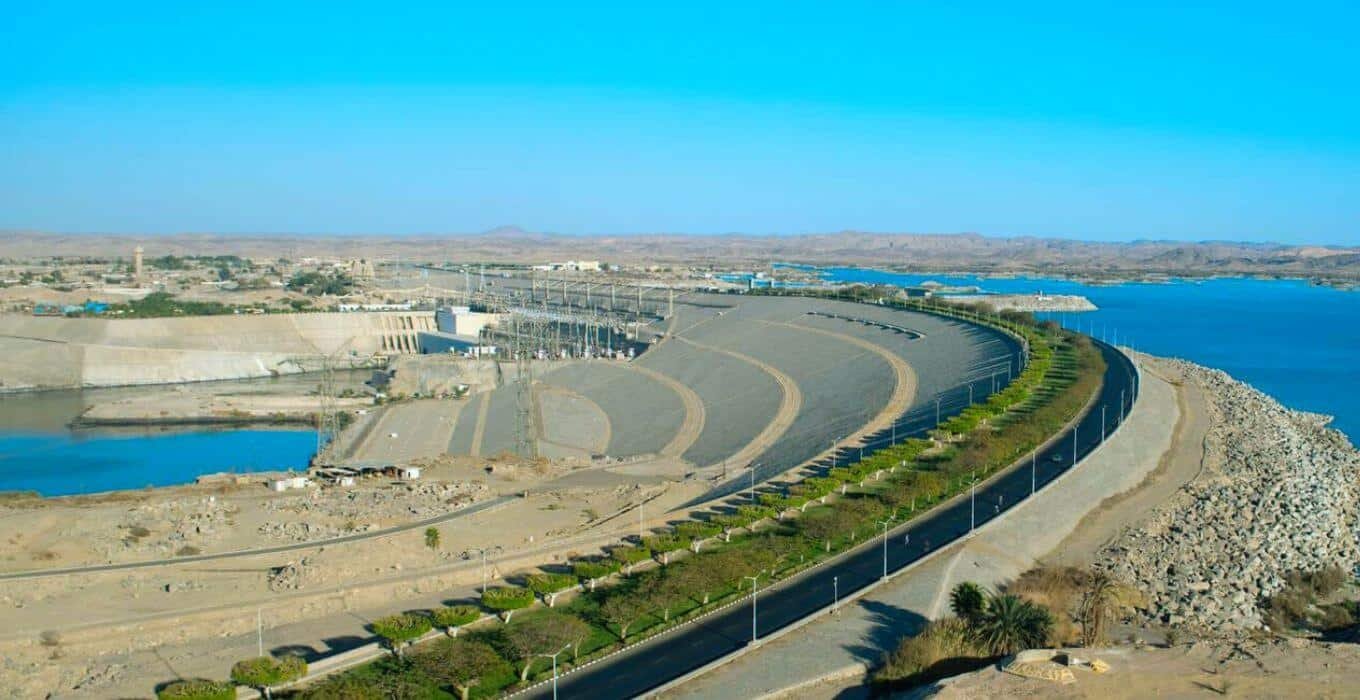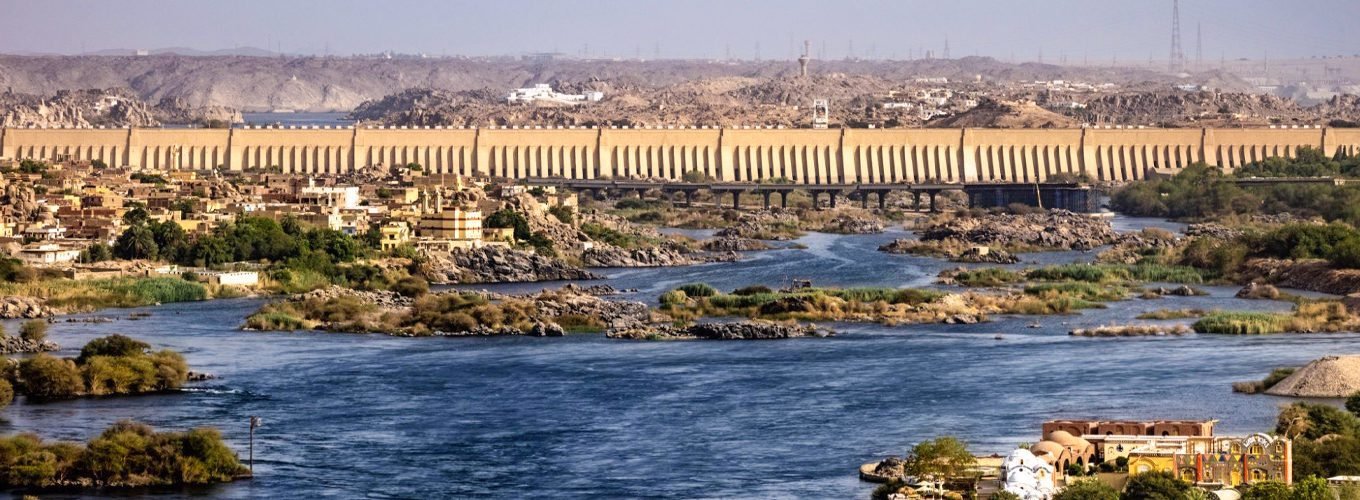The Aswan High Dam is in southern Egypt, a huge engineering project. It uses the Nile River’s power. Finished in 1970, it changed Egypt’s landscape and water use. What secrets does it hold, and how has it helped Egypt grow?
This dam is a top engineering achievement of the 20th century. It has drawn global interest. But, have you thought about its size, purpose, and the challenges it faced? How has it changed the lives of millions in Egypt?
Key Takeaways
- The Aswan High Dam is a colossal engineering project that has transformed Egypt’s landscape and water management.
- Completed in 1970, the dam has provided hydroelectric power, flood control, and irrigation to millions of Egyptians.
- As one of the most significant civil engineering achievements of the 20th century, the Aswan High Dam has captured global attention.
- The dam’s construction faced numerous challenges, but its impact on Egypt’s development has been profound.
- Explore the secrets and stories behind this monumental structure and its lasting legacy on Egyptian culture and history.

The Engineering Marvel of the Aswan High Dam
The Aswan High Dam is a true marvel of engineering. It stretches nearly 4 miles long and stands 365 feet tall. Built with 18 million cubic meters of concrete and 2 million tons of steel, it has changed Egypt’s landscape.
Monumental Proportions and Impressive Statistics
The dam’s size is awe-inspiring. Its reservoir, Lake Nasser, stretches 310 miles upstream. It holds 132 billion cubic meters of water, controlling the Nile River’s flow.
A Feat of Civil Engineering and Construction
Building the Aswan High Dam was a huge civil engineering achievement. Thousands of workers and advanced technology made it possible. Their hard work and determination brought this vision to life.
|
Dimension |
Statistic |
|
Length |
3.8 miles (6.1 km) |
|
Height |
365 feet (111 m) |
|
Concrete Volume |
18 million cubic meters |
|
Steel Used |
2 million tons |
|
Reservoir Capacity |
132 billion cubic meters |
|
Reservoir Length |
310 miles (500 km) |
“The Aswan High Dam stands as a testament to the power of human ingenuity and the ability to harness nature for the benefit of society.”
Harnessing the Nile: The Purpose of the Aswan High Dam
The Aswan High Dam was built to tap into the Nile River’s power. It was made to give Egypt a steady water supply. Before the dam, the Nile’s water levels changed a lot. It would flood in the wet season and dry up in the dry season.
The dam was designed to control the Nile’s flow. It stores water during the rainy season. This way, it provides water for irrigation and agricultural development all year round. It turned the Nile Valley into a rich agricultural area.
- Flood Control: The dam’s huge reservoir stops harmful floods. It keeps communities along the Nile safe.
- Irrigation and Water Management: The dam’s water flow helps with irrigation. It supports growing different crops and boosts agricultural development.
- Reliable Water Supply: The Aswan High Dam ensures a steady water supply from the Nile River. This is key for water management and economic prosperity.
“The Aswan High Dam was a transformative project that allowed Egypt to harness the power of the Nile, providing the foundation for the country’s modern agricultural and economic development.”
The Aswan High Dam has greatly influenced Egypt’s landscape, economy, and future. It shows Egypt’s engineering skills and its dedication to using the Nile River for its people’s benefit.
Hydroelectric Power Generation at the Aswan High Dam
The Aswan High Dam is a key player in Egypt’s water management and power generation. It houses 12 turbines, capable of producing 2,100 megawatts of power. This makes it a major hydroelectric power station in Africa.
This renewable energy source is vital for Egypt’s economic and industrial growth. It’s a reliable and green way to generate electricity.
The dam’s hydroelectric power generation supports Egypt’s goal for sustainable development. It uses the Nile River’s power, reducing Egypt’s use of fossil fuels. This helps fight climate change.
Renewable Energy and Sustainable Development
The Aswan High Dam’s hydroelectric power is key to Egypt’s renewable energy and sustainable development efforts. It helps Egypt diversify its energy mix and cut carbon emissions. The dam’s electricity powers industries, homes, and key infrastructure.
|
Metric |
Aswan High Dam |
Conventional Power Plants |
|
Electricity Generation Capacity |
2,100 MW |
1,500 MW (average) |
|
Greenhouse Gas Emissions |
0 (zero emissions) |
Significant emissions |
|
Fuel Consumption |
None (renewable water resource) |
Requires fossil fuels |
The Aswan High Dam’s hydroelectric power generation supports Egypt’s economic growth. It also fits with the country’s goals for sustainable development and protecting the environment.

Water Management and Irrigation Benefits
The Aswan High Dam has changed Egypt’s water management. It offers irrigation and flood control solutions. This has made more land available for farming and helped develop new irrigation systems. It has greatly increased agricultural productivity.
Before the dam, the Nile’s floods and droughts harmed local communities a lot. The dam stores and releases water as needed. This ensures a steady water supply for Egypt’s growing population.
Controlling the Nile’s Floods and Droughts
The Aswan High Dam’s water management is key in protecting Egypt from the Nile’s unpredictable seasons. It stores extra water during floods and releases it during droughts. This has:
- Prevented devastating flood damage to surrounding areas
- Ensured a reliable supply of water for irrigation and domestic use
- Mitigated the impact of droughts, safeguarding agricultural productivity
These improvements in water management have greatly changed Egypt. They have opened up new chances for sustainable development and economic growth.
Environmental Impact of the Aswan High Dam
The Aswan High Dam brought many benefits to Egypt but also caused big environmental problems. The creation of Lake Nasser flooded out Nubian communities and destroyed ancient sites and natural homes. These environmental impacts have greatly affected the local ecosystem and biodiversity.
The dam changed the Nile’s flow, hurting millions who rely on it. The Nubian settlements along the Nile had to move, causing big resettlement issues for them.
|
Environmental Impact |
Ecosystem Changes |
Biodiversity Impacts |
|
Displacement of Nubian communities |
Disruption of the Nile’s natural flow |
Loss of native plant and animal species |
|
Inundation of archeological sites |
Alteration of the river’s ecosystem |
Decreased fish populations and fisheries |
|
Flooding of natural habitats |
Reduction in nutrient-rich Nile floods |
Invasive species introduction |
Fixing these environmental challenges is a big task for Egypt and the world. They are working hard to lessen the damage and protect the environment while still developing.
The Aswan High Dam’s Impact on Egyptian Culture and History
The Aswan High Dam has deeply changed Egypt’s culture and history. The creation of Lake Nasser moved Nubian settlements. This disrupted their long-standing traditions and ways of life.
The dam also threatened ancient monuments, like the temples of Abu Simbel. Thanks to a global effort, these treasures were moved to safety. This saved Egypt’s rich cultural heritage for the future.
Preserving Ancient Monuments and Relocating Nubian Settlements
The Aswan High Dam’s effect on Nubians and ancient monuments is key to its legacy. Moving Nubian communities changed their lives. They had to adjust to new places and ways.
The temples of Abu Simbel were moved to avoid being lost under Lake Nasser. This was a huge achievement in saving Egypt’s cultural impact and ancient monuments.
“The Aswan High Dam’s impact on the Nubian people and the preservation of ancient monuments have become an integral part of the dam’s complex legacy.”
The Aswan High Dam’s influence on Egypt is complex. It has brought benefits like power and water management. Yet, its relocation of Nubian settlements and preservation of archaeological sites have marked Egypt’s culture and heritage.
Aswan High Dam
The Aswan High Dam is a huge engineering project in southern Egypt. It spans the mighty Nile River. Finished in 1970, it’s 365 feet high and almost 4 miles long, one of the biggest dams globally.
The dam holds back the Nile’s waters, creating Lake Nasser. This reservoir stretches 310 miles upstream and can hold 132 billion cubic meters of water. It helps control floods and manage water, benefiting the area greatly.
The dam’s size is just part of its wonder. It has 12 turbines that together produce 2,100 megawatts of power. This makes it a key source of clean energy for Egypt. It has helped the country grow economically and modernize.
|
Dimension |
Measurement |
|
Height |
365 feet |
|
Length |
Nearly 4 miles |
|
Reservoir (Lake Nasser) |
310 miles upstream |
|
Reservoir Capacity |
132 billion cubic meters |
|
Turbine Capacity |
2,100 megawatts |
The Aswan High Dam shows the creativity and hard work of the Egyptian people. They’ve used the Nile’s power to drive their nation’s progress. This massive project is a source of pride and a symbol of Egypt’s dedication to green energy.
The Legacy of Gamal Abdel Nasser and Saad El Aali
The Aswan High Dam project is a key part of Egyptian history. It was led by Gamal Abdel Nasser and Saad El Aali. Nasser, Egypt’s former president, saw the dam as a symbol of independence and pride. El Aali, the project’s chief engineer, used new technology and techniques to build it.
Visionary Leaders Behind the Aswan High Dam Project
Gamal Abdel Nasser was Egypt’s president from 1956 to 1970. He pushed for the dam to control the Nile River. He wanted Egypt to be modern and self-sufficient, and the dam was a big part of that plan.
Saad El Aali was the engineer who made Nasser’s dream come true. He faced many challenges but never gave up. His work showed Egypt’s engineering skills and its drive for progress.
Nasser and El Aali worked together on the Aswan High Dam. Their work has made a lasting impact on Egypt. The dam is a symbol of Egypt’s growth and strength.
Visiting the Aswan High Dam: A Must-See Attraction
The Aswan High Dam is a top spot for those exploring Egypt. It’s a huge engineering wonder that lets visitors see one of the world’s greatest achievements. The dam’s size and its complex turbine system are awe-inspiring, teaching tourists about its grand scale.
The dam’s visitor center is a key spot for learning. It has exhibits and tours that explain the dam’s history and its role in Egypt’s water management and hydroelectric power generation. Interactive displays show the dam’s engineering marvels and its importance.
Seeing the Aswan High Dam is a key part of any Egypt travel plan. Visitors can walk on the dam, see the turbine halls, and understand the vision behind it. The Aswan High Dam shows what humans can achieve with big engineering projects.
If you love history, engineering marvels, or just want to see Egypt’s culture, the Aswan High Dam is a must-see. It offers a memorable and enlightening visitor experience.
The Aswan Low Dam: Predecessor to the Monumental High Dam
Before the Aswan High Dam was built, the Nile River in Aswan had an earlier dam. The Aswan Low Dam was finished in 1902. It was a big step to control the Nile’s flow and help farms in Egypt.
But, the Low Dam couldn’t handle the Nile’s changes well. It couldn’t stop floods or droughts. So, a bigger and better solution was needed to use the Nile’s power fully.
The Aswan High Dam came later and took over as the main water project. It’s huge and advanced. It does a better job of hydroelectric power generation, flood control, and irrigation for the Nile Valley.
|
Feature |
Aswan Low Dam |
Aswan High Dam |
|
Construction |
Completed in 1902 |
Completed in 1970 |
|
Purpose |
Regulate Nile flow, provide irrigation |
Hydroelectric power, flood control, irrigation |
|
Capacity |
Limited |
Monumental |
|
Impact |
Revealed need for more comprehensive solution |
Transformed water management and development in Egypt |
The Aswan High Dam was built in the 1960s. It was a big step for Egypt to manage the Nile River better. This amazing project showed Egypt’s vision and hard work to solve the problems of the old Aswan Low Dam.
Ongoing Maintenance and Upgrades to the Aswan High Dam
The Aswan High Dam is a marvel that has boosted Egypt’s economy for years. It needs constant care to keep working well. The Egyptian government has spent a lot on updates, using the latest tech to keep it safe.
New, better turbines are a big part of the updates. They make more electricity and work more reliably. This means less chance of power outages. The government has also strengthened the dam to handle the Nile River’s power.
Advanced systems now watch over the dam, checking its health in real time. This shows Egypt’s dedication to maintenance and upgrades. It keeps the Aswan High Dam safe and valuable.
These ongoing projects help the dam last longer. By focusing on Aswan High Dam upkeep and technological advancements, Egypt keeps its power and water management strong. This benefits future generations.
Conclusion
The Aswan High Dam is a symbol of Egypt’s engineering skills and its goal to use the Nile River’s power. It has changed the landscape, giving a steady source of hydroelectric power. It also controls the Nile’s flow and helps farming.
Even though it has environmental and cultural effects, the dam is a source of national pride. Egypt keeps improving this project, showing its commitment to progress.
The dam is key to Egypt’s growth and well-being. It helps generate clean energy and manage water, boosting the economy and improving lives. This shows Egypt’s dedication to its people’s future.
The Aswan High Dam is a true marvel of engineering. It shows Egypt’s advanced technology and its aim to benefit its citizens. Looking ahead, this iconic dam will keep playing a vital role in Egypt’s development and leadership in water and energy.
Read other related articles:
